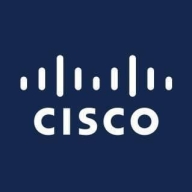

Palo Alto Networks Panorama and Cisco Security Cloud Control compete in the realm of network management solutions, offering unique capabilities tailored to different environments. Panorama seems to have an edge due to its ease of handling multiple firewalls and a user-friendly interface, while Cisco's strong integration in its ecosystem is noteworthy.
Features: Palo Alto Networks Panorama stands out with centralized management, efficient traffic handling, and scalability. Its user-friendly interface and innovative threat intelligence also contribute to its appeal. Cisco Security Cloud Control emphasizes automation and integration, streamlining operations across Cisco products and offering centralized management advantages within Cisco environments.
Room for Improvement: Panorama users express concerns about high pricing, complexity in setup, and limitations in third-party integration and configuration flexibility. Cisco Security Cloud Control requires better third-party integrations, user-friendly interfaces, and enhanced reporting features.
Ease of Deployment and Customer Service: Palo Alto Networks Panorama supports varied deployment environments but has mixed reviews on deployment ease in hybrid scenarios. Customer service is generally positive, though response times vary. Cisco Security Cloud Control boasts smoother integration within Cisco systems, with administrative ease attributed to its alignment with Cisco's ecosystem. Customer service is noted for efficiency, though support varies regionally and by case urgency.
Pricing and ROI: Both Panorama and Cisco Security Cloud Control face criticism for premium pricing. Many find Panorama expensive but justify costs with its time-saving management features. Cisco Security Cloud Control is similarly seen as offering strong ROI through its extensive features optimizing Cisco environments.
| Product | Market Share (%) |
|---|---|
| Palo Alto Networks Panorama | 6.9% |
| Cisco Security Cloud Control | 1.5% |
| Other | 91.6% |


| Company Size | Count |
|---|---|
| Small Business | 6 |
| Midsize Enterprise | 3 |
| Large Enterprise | 6 |
| Company Size | Count |
|---|---|
| Small Business | 33 |
| Midsize Enterprise | 14 |
| Large Enterprise | 46 |
Cisco Security Cloud Control offers centralized management, real-time visibility, and AI-driven automation for on-premises and cloud environments, simplifying scalability and deployment.
With a unified approach, Cisco Security Cloud Control enhances security posture by providing cross-platform insights across Cisco's ecosystem. It accelerates threat detection and optimizes policy enforcement through a blend of AI automation and natural language querying capabilities. The intuitive platform serves multiple devices, enabling comprehensive management of Secure Firewall, Secure Access, and other services with guidance from the Cisco AI Assistant. It also includes an AI Operations feature that identifies critical issues and provides real-time insights, enhancing response times while a policy analyzer improves security hygiene by detecting and closing security gaps. Its automation minimizes manual tasks, secures cloud-stored configurations, and supports two-factor authentication. However, it could benefit from improvements in navigation clarity, bulk change handling, and expanded third-party integrations.
What are the key features of Cisco Security Cloud Control?Industries implementing Cisco Security Cloud Control leverage its capabilities for tasks ranging from firewall management to intrusion prevention. Enterprises use it to streamline policy management, automate configurations, and integrate Cisco devices with cloud strategies, benefiting from simplified security orchestration and network segmentation.
Panorama network security management provides static rules and dynamic security updates in an ever-changing threat landscape. Reduce administrator workload and improve your overall security posture with a single rule base for firewall, threat prevention, URL filtering, application awareness, user identification, file blocking and data filtering.
We monitor all Firewall Security Management reviews to prevent fraudulent reviews and keep review quality high. We do not post reviews by company employees or direct competitors. We validate each review for authenticity via cross-reference with LinkedIn, and personal follow-up with the reviewer when necessary.